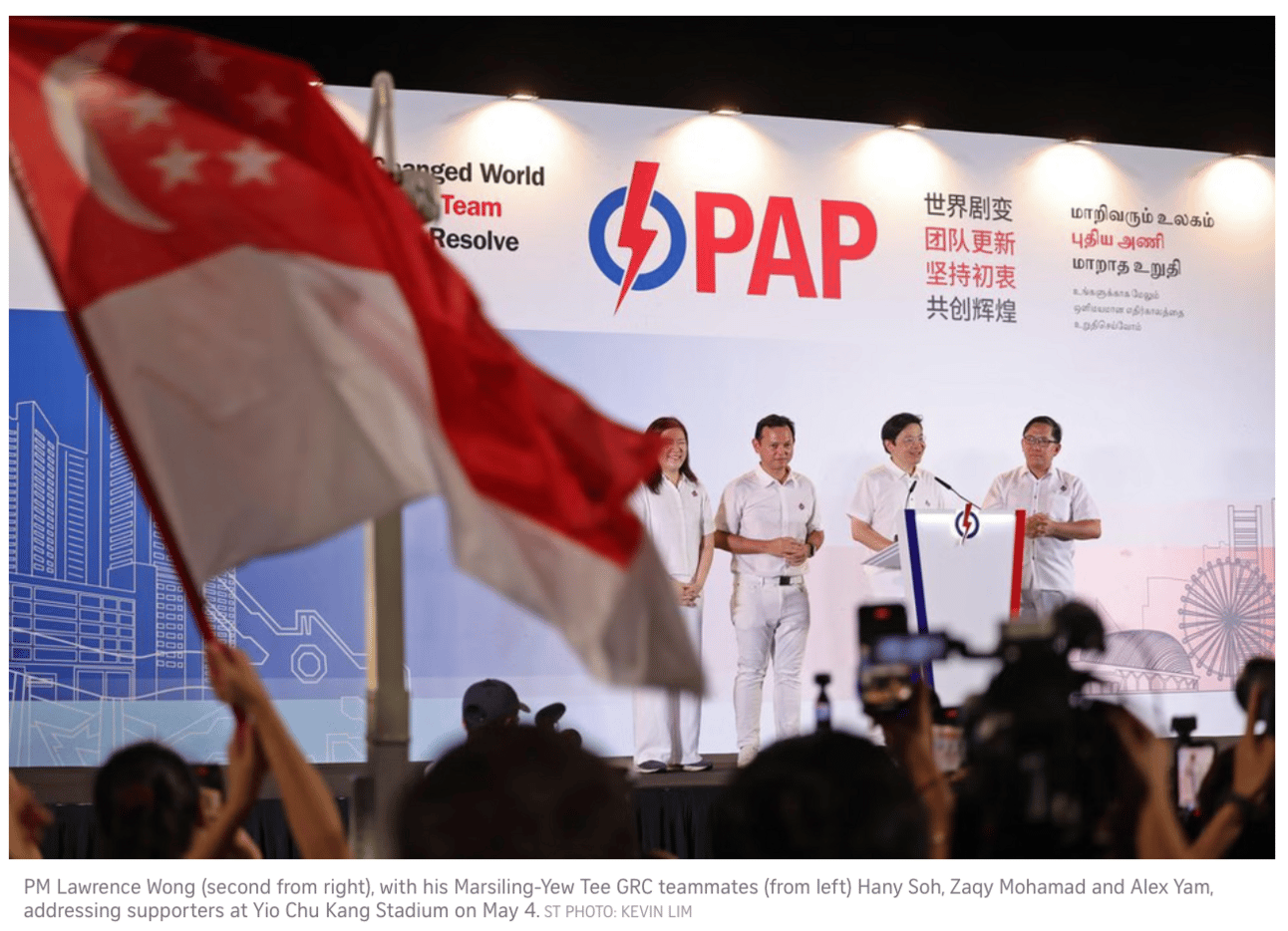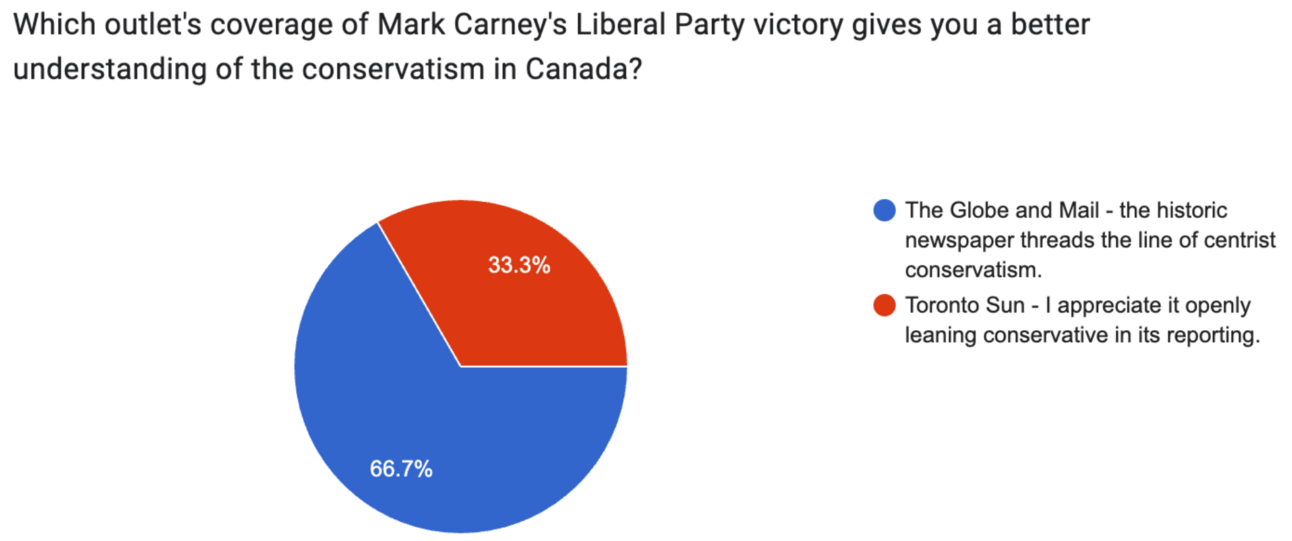- Signpost
- Posts
- 🇸🇬 Singapore: PAP wins, again.
🇸🇬 Singapore: PAP wins, again.
Another election, another unexpectedly strong incumbent win.

What the media says, what it means, and why it matters.
Was this forwarded to you? Signpost is a free weekly newsletter analysing what the media says, what it means, and why it matters. It’s free to subscribe. Alternatively, you can add me on LinkedIn.
Hi Signposter. I arrived on the sunny shores of Singapore 10 years ago on 19th September 2015. I remember the day exactly because I landed on the Saturday before the 2015 Singapore Formula 1 Grand Prix. And while that season’s lead driver and defending race winner Lewis Hamilton was expected to win the race, he instead recorded his first retirement of the 2015 season. The race was won by challenger Sebastian Vettel.
No such issues in last week’s general election in Singapore, where the incumbent People’s Action Party extended their uninterrupted rule of the island nation. This was the first general election proper I got to witness in Singapore, since I arrived after the 2015 election and the 2020 election was severely downscaled due to COVID-19. It was hard not to draw comparisons between Singapore’s election culture and the other two election cultures I am a little more familiar with — India (because I’m from there) and the United States (because I cannot avoid it).
The biggest difference between Singapore and Indian and American election culture is the role of the mass media. While both Indian and American mass media houses openly and willingly wear their political leanings on their sleeve, Singapore’s mass media is centralised under the government. So while there was coverage, it was nowhere near as charged or aggressively partisan (and often outright offensive) as it often is in those countries, where there are several more voters who often vote along populist or ethnic lines.
And while it is perhaps far too early to characterise GE2025 (as it was called) as Singapore’s first ‘podcast election’, there was a remarkable online presence of amateurs and professional journalists alike who picked up the gauntlet laid down by the mainstream media to provide their own perspective to the elections.
This issue of Signpost will, however, look at how the mainstream media covered the election results and see what we can tell about the state of the mainstream media in Singapore in 2025.
SIGNPOST UPDATES
On April 26th, we wrote about the death of Pope Francis. After the first Latin American pope in history, the world now has it’s first American pope. Read our original piece here.
THE STORY SO FAR
🤍 Singaporeans vote white

Singapore’s ruling People’s Action Party is now the world’s longest uninterrupted governing party within modern multi-party parliamentary democracies. And while that sounds like a very specific niche, the truth is that the party, which was formed 70 years ago, has been in power for 65 continuous years, even while Singapore celebrates 60 years this year as a republic. In most other countries, perhaps in every other country in the world, this would be a sign of massive corruption and abuses of power by the ruling elite, doing what they can to hang on to power even as a disenfranchised population rebels violently against them.
Singapore is different. As far as I can tell, no election result has ever been contested by the opposition, and with one of the lowest crime rates and highest GDP per capita in the world (for at least the last two decades), Singapore is often held up as an exemplary example of a parliamentary democratic system that gets things done.
This election, the first since COVID-19, was perceived as a mandate on the ruling party, along with the newly appointed-now-elected Prime Minster Lawrence Wong. With 65% of the vote in the bag, suffice to say the people want him in power.
In this issue of Signpost, we’ll look at how the news was reported in the mainstream news media, including the biggest television news channel in Singapore, CNA (Channel NewsAsia), and the oldest, most widely circulated newspaper of record in Singapore, The Straits Times.
HEADLINE NEWS
📺 CNA: GE2025: Stunning victory for PAP, winning 87 of 97 seats with higher national vote share in PM Wong's first electoral test [link]
📢 What CNA is saying
The article summarises the results of the election day, with a focus on the winning party (understandably). Some of the language used in the article it questionable, which we will see further down.
📸 Visuals

Five visuals are used in this article, each one designed to reflect the political destinies of the parties of Singapore. At the top of the article is an image showing a triumphant People’s Action Party (PAP) secretary-general and current and on-going Prime Minster Lawrence Wong. He is standing behind a podium branded in PAP colours, with the PAP’s lightening logo glowing like an orb. He is wearing the party colours (white) in a half-sleeved collard shirt. There is no tie. His right hand is high in the air waving at (one can assume) spectators, and he is smiling broadly. He is relaxed and happy.

Further down is a photo from a stadium showing supporters of the PAP congratulating other PAP candidate Desmond Lee. There is a group of people standing behind a metal barrier, carrying PAP flags and other lit-up signboards. In front of the metal barrier is Desmond Lee, reaching over to shake hands with supporters with his back towards us. He is also dressed in the party colours (white), while in bokeh behind him are television cameras picking up the action.

After that we have a photo of five candidates from the main opposition party, The Worker’s Party (WP), standing on a blue stage with a giant electronic board behind them and two standing microphones in front of them. The electronic board shows the names and faces of the people on stage. Speaking into the microphones is the WP secretary-general, Pritam Singh. The five members on stage are standing in a line, hands by their side. Only Pritam Singh and WP chairperson Sylvia Lim (standing at the extreme right) have their hands clasped in front of them. All are dressed in the party colours (dark blue trousers and a light blue half-sleeved collard shirt).

Immediately below is a picture taken from a height looking down upon Leong Mun Wai, secretary-general of the opposition Progress Singapore Party (PSP). He is standing in front of a glass door with the PSP logo and the party name above that door, and is surrounded by the media. Several microphones and cameras are pushed towards him.

The last photo is taken from a distance of the opposition Singapore Democratic Party (SDP) members in a huddle. While there are nine people dressed in the party colours (red polo shirts), only two faces are clearly visible in the photo — chairman Paul Tambyah on the left, and secretary-general Chee Soon Juan towards the centre. The discussion is clearly serious.
✍🏽 Words
The headline is 21 words long. The headline calls the ruling PAP’s victory ‘stunning’, specifies the number of seats won (‘87 of 97’) and contextualises the win by saying that the victory has a ‘higher national vote share in PM Wong’s first electoral test’ compared to the previous election. The subheading reiterates this again specifying the vote share percentage (‘65.57 per cent of the popular vote, up from 61.24 percent in GE2020’). The subheading details why this is an even greater achievement, because it ‘bucked a trend of dips in the ruling party’s vote share after a new prime minister takes office’ (for context, Lawrence Wong was appointed prime minister in 2024, and this was his first general election as prime minister).
The article sets the scene for the election, being held ‘amid global economic uncertainties’, before stating that the ruling party won ‘almost 90 per cent of the seats’ in parliament, ‘staving off’ opposition challenges and not ‘conceding any new ground to its rivals’. The article says that voters ‘chose political stability and economic safety over the opposition’s calls for greater checks and balances’. The article then restates what was shared in the headline and subheading, before sharing that 10 constituencies voted ‘over 75 percent’ in favour of the ruling party. A few quotes from PM Lawrence Wong thanking the electorate for the results from his post-election result press conference follow. This is added to by quotes from Senior Minister and previous prime minister Lee Hsien Loong, son of Singapore’s (and the PAP’s) founder.
The article then gets into analysing the results in further detail, saying that the ‘4.33 percentage point swing towards PAP’ indicated that the ‘WP’s much vaunted push in eastern Singapore […] failed to translate to seats’. In the constituency of Tampines GRC (Group Representation Constituency), the PAP candidates ‘came up on top’ over the WP candidates with ‘52.02 per cent of votes’. Similarly, in the ‘hot seat’ constituency of Jalan Kayu SMC (Single Member Constituency), the PAP candidate ‘triumphed’ over the WP candidate ‘with 51.47 per cent of votes’. While in Punggol GRC, where ‘WP had focused its attacks’ on the PAP candidate, the WP ‘only managed to garner 44.83 per cent of the votes’.
At this point, the article admits that WP did still ‘retain its 10 parliamentary seats’ with wins in other constituencies, even though it ‘failed to make further inroads’. The party also managed to ‘match or improve its margins of victory’ where it won. As it was also offered two Non-Constituency Member of Parliament (NCMP) seats because the ‘best-performing losing opposition candidates’ are invited to parliament in the event there are ‘fewer than 12 opposition MPs elected’, this will ‘grow the WP’s overall parliamentary presence to 12 seats — the largest in its history’. The article also states that the WP got ‘50.04 per cent’ of the vote share wherever it contested, ‘a slight 0.45 percentage point drop from the previous election’. A quote from Pritam Singh follows.
Finally, the article wraps up with results from other opposition parties, saying it was a ‘dismal night’ for the PSP, having lost all their contests. Leong Mun Wai is quoted as saying “the results are very shocking to us”. As for the SDP, Chee Soon Juan is quoted as saying “obviously, it’s really upsetting” referring to his party’s performance, especially considering that he was on track to be offered an NCMP seat, ‘his first entry into parliament after 33 years of politics’ before other results from the WP went against him. The article also reminds us of the ‘walkover’ at Marine Parade-Braddell Heights GRC where only the PAP contested, and that the election had a ‘record low voter turnout’ of ‘92.47 per cent’.
❓ What it means
There were 11 parties that contested the elections, along with two independent candidates, but the article only has mentions of four parties. This includes the winning PAP, the WP (which will form the entire opposition in parliament), and the two other most high profile political parties in Singapore, the PSP and SDP (note: Red Dot United got more votes than the SDP, and contested more seats than the PSP and SDP, but the party is not mentioned in the article).
The article switches from mentioning the winning numbers of the PAP to the losing numbers of the WP. Congruently, the article says that the PAP garnered 4.33% more votes this time, and then called the WP’s push for more seats a failure, while later saying that the WP gathered more than 50% of the votes wherever it contested. So then where did that increase of 4.33% come from?
Also, the WP vote share wherever it contested dropped by 0.45%, which is within the range of error, yet the article calls this out as a ‘slight drop’. I’m also not sure how one can ‘triumph’ with only 51% of the vote, or ‘come up on top’ with 52% of the vote as the PAP did in Jalan Kayu SMC and Tampines GRC respectively. The ‘stunning’ nature of the PAP victory is a swing of 4.33%, which while mathematically less than 5%, is indicative of what several people expected to be a much stronger showing for the opposition.
Most telling is the photos taken of the PSP and SDP candidates. Both look under pressure.
⚠️ Why it matters
The article never explains the election results. The results are merely stated and are viewed purely in a vacuum. Despite the overwhelming strong coverage of the ruling PAP’s victory, a neutral observer with zero knowledge about Singapore’s electoral system might think the WP had a pretty good election since they will have their largest presence in parliament ever. The question of why certain parties fared better than others is left out. Perhaps the truth is that CNA themselves don’t know why.
CNA ran a ‘roundtable debate’ during the election that was roundly mocked and criticised by observers online. The five parties contesting the most seats were invited, were asked questions individually, and were not allowed to respond to each other, or even acknowledge that there was anybody else sitting at the table. The PAP candidate got double the time to respond versus everyone else, and also got to speak last. As a reminder, this is the biggest news media television channel in the country.
📰 THE STRAITS TIMES: GE2025: PAP gets 65.57 per cent of votes in landslide win [link]
📢 What The Straits Times is saying
The 180 year-old newspaper spends most of the article quoting PM Lawrence Wong’s post-election result press conference.
📸 Visuals

There are four visuals in the article, one photo and three videos. At the top of the article is a photo of the PAP candidates from Marsiling-Yew Tee GRC, the constituency of Wong, standing on stage with a large party backdrop behind them. The backdrop has the party name, slogan, and diagram-like images referencing Singapore. The candidates are all dressed in the party colours (white), while Wong is standing behind a PAP branded podium speaking to the audience. In the foreground, in bokeh, is a large waving flag of Singapore.
Following this are two videos from PM Wong’s post-election press conference. The first quotes him as saying that the party will work harder, and second refers to him referencing the increased number of WP seats in parliament.
At the end of the article is a Straits Times video recapping the elections, branded as ‘GE2025 REWIND’, in the style of YouTube’s year-end REWIND videos.
✍🏽 Words
I’ll focus on the content that is different from the previous CNA article. First, the headline uses the word ‘landslide’, and includes the vote share percentage. Next, the article begins with saying that the vote swing towards the PAP was ‘commanding’, and that ‘voters overwhelmingly endorsed the ruling party’. PM Wong has been awarded with what the article calls a ‘clear mandate’, and that ‘constituencies tipped to be fierce battlegrounds […] were in the PAP’s grip by 11pm’, including ‘decisive wins’ in other constituencies.
Here is where the article begins to quote PM Wong from his press conference. Following which, the article does admit that while the WP’s message ‘did not seem to have resonated with voters’, some of those voters still helped the WP ‘retain its 10 seats and strengthen its grip’ on two constituencies. More election results follow, with a brief mention of the PSP’s losses, before the article calls the WP candidate Andre Low ‘the “best loser”’, while also saying that his winning PAP opponent Ng Chee Meng ‘made a successful comeback’ after losing his previous election in 2020. Further quotes from the press conference follow, with a few brief quotes from other other opposition members, including from SDP chairman Paul Tambyah, who says the reason for their defeat was the ‘voters’ flight to safety to “the constant drumbeat of crisis”’.
A quote from PM Wong is included here against ‘foreign interference’ and ‘mixing of race and religion with politics’ which ‘surfaced at the election’. The article ends by saying ‘in the end, the people chose stability and continuity over the opposition’s call for greater checks and balances’.
❓ What it means
There is not much really to say here considering that so much of the article is devoted to quotes from PM Wong’s press conference. Which in itself should show you the political leanings of the media. Perhaps even more so than CNA, who were able to quote extensively from the various opposition members, including photos of them, The Straits Times paints GE2025 as the election of PAP + friends.
Calling a win of 51% a ‘successful comeback’ by PAP member Ng Chee Meng feels like overstating things. And there is no mention of the reason why his election result was so close — there’s no mention of the issues that plagued his campaign, which included an anonymous leak of how he treated teachers when he was an education minister, and how his endorsed sale of major insurer and NTUC (National Trades Union Congress) company Income to Allianz of Germany was called off under intense public scrutiny.
⚠️ Why it matters
Let’s go back to the line published towards the end of the article, which also shows up in the CNA article — ‘the people chose stability and continuity over the opposition’s call for greater checks and balances’. Can you see the issue here? It almost sounds like The Straits Times (and CNA) say that now there will be less checks and balances. And the phrasing of this like a binary choice is telling — you can either have stability or checks and balances. Why can’t the Singaporean voter have both? Is this a slight on the ruling PAP, that they are incapable of checks and balances? It’s an odd phrase to publish.
WHAT’S GOING ON?
🎭 What role for the mainstream media?
Allow me to philosophise a little since this is the first proper general election in my life that I have witnessed.
What is the role of the media in a modern parliamentary democracy? In his 1971 address to the General Assembly of the International Press Institute in Helsinki, Singapore’s founding father Lee Kuan Yew said
Freedom of the press, freedom of the news media, must be subordinated to the overriding needs of the integrity of Singapore, and to the primacy of purpose of an elected government.
I’ve had the privilege of living in five countries: Kuwait, India, the United Arab Emirates, Canada, and now Singapore. This is the ranking of those four countries in the 2025 Reporters Without Borders World Press Index:
Canada - 21
Singapore - 123
Kuwait - 128
India - 151
United Arab Emirates - 164
I remember being a student at university in Canada (where I spent a grand total of two years) and I was absolutely thrown to see the university newspaper run long editorials and large headlines criticising the university management, for weeks on end.
This is not to say that the whole point of the media is to simply criticise those in power, but I believe the mainstream media plays the role of being an unelected counterbalance to the powers that be, whose legitimacy is increasingly determined by a free market of news consumers. While in extreme cases this free market capitalist-driven media landscape leads to a hyper partisan and aggressive media, another reason is because the internet has commodified delivering the news. Now, anyone can do it.
Which means that if people can get the news faster on X, why should they read the news pumped out of slower moving multi-million dollar organisations with thousands of employees that say the exact same thing? Again, what is the role of the media in a modern parliamentary democracy?
It isn’t enough to deliver the news. In an age where trust in the mainstream media is at an all time low because media organisations are often run like private businesses, and are therefore susceptible to stakeholder pressures as any other private organisation, what is the role of the public media in a modern society?
Is it fair for the news media to be subjected to similar expectations as a private company? Do we as a society believe that the media fulfils a moral and social role beyond simply turning profits and providing employment? Is it better that news organisations are removed from the pressures of the private market and are instead centrally organised by the government of the day? How do we ensure that we as a society build the news media that best serves our interests? Does Singapore’s centrally organised mainstream media and independent-literati-driven online media service a modern Singaporean society’s best interests?
The truth, as always, is somewhere in between.
Read widely. Question thoroughly. Decide accordingly.
WEEKLY POLL
LAST WEEK’S POLL

ALSO THIS WEEK
Skype officially died this week . Let’s relive some sweet memories.
Was this forwarded to you? Signpost is a free weekly newsletter analysing what the media says, what it means, and why it matters. It’s free to subscribe. Alternatively, you can add me on LinkedIn.

